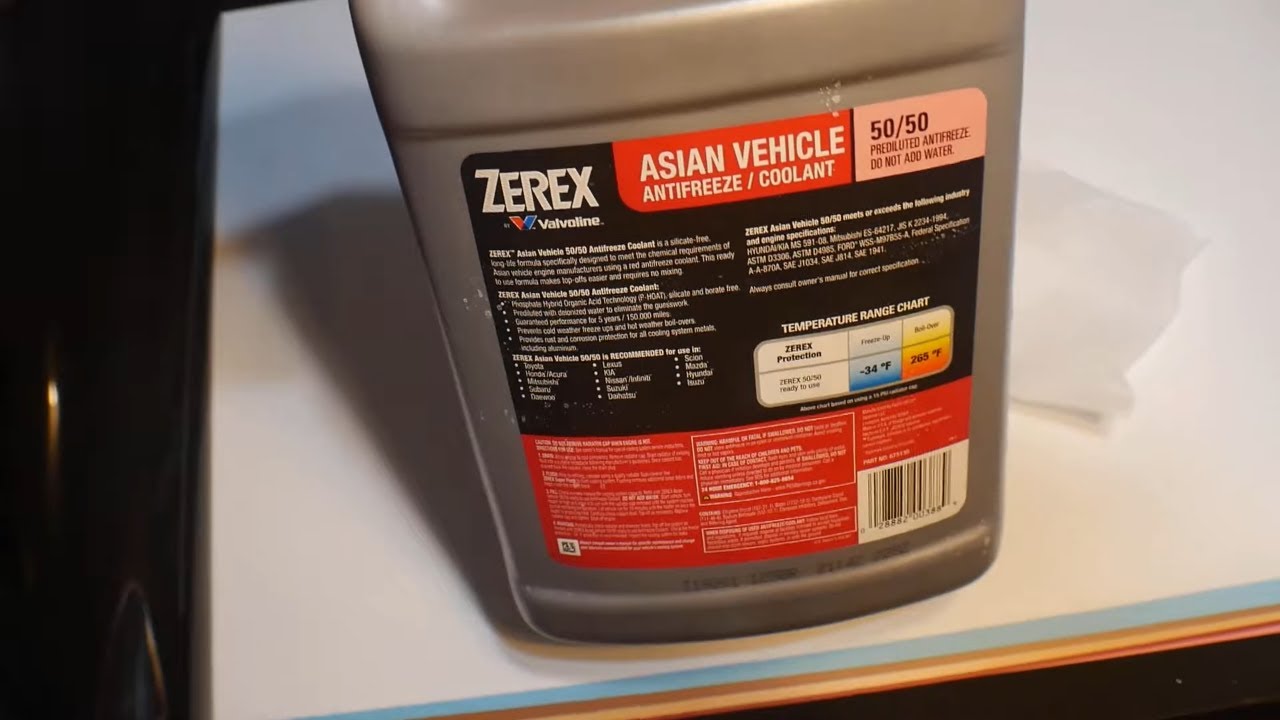Asian Red Coolant Is What Type

Let's dive into the world of Asian Red Coolant. If you're here, you likely know that coolant isn't just coolant. It's a crucial component in your engine's cooling system, and using the wrong type can lead to significant problems. This guide aims to demystify Asian Red coolant, specifically, breaking down its composition, properties, and how it interacts with your vehicle's cooling system. Whether you're tackling a coolant flush yourself, diagnosing an overheating issue, or just expanding your automotive knowledge, understanding this coolant type is essential.
Understanding Asian Red Coolant
Asian Red coolant, also known as Long Life Coolant (LLC) or Super Long Life Coolant (SLLC), is a specific type of antifreeze formulated for use in vehicles manufactured by Asian automakers, primarily Toyota, Honda, Mazda, Subaru, and others. It's distinguished by its red or pink color, although color alone isn't always a reliable indicator, as some manufacturers might use similar colors for different formulations. Always check the manufacturer's specifications.
Key Specs and Main Parts
The key difference between Asian Red coolant and other types lies in its formulation, primarily its Organic Acid Technology (OAT) inhibitor package. Let's break down the main components:
- Ethylene Glycol (or Propylene Glycol): This is the primary component, providing freeze protection (lowering the freezing point of water) and boil-over protection (raising the boiling point). Ethylene glycol is more common and offers superior heat transfer, but propylene glycol is less toxic.
- Deionized Water: Coolant is always mixed with deionized or distilled water, not tap water. Tap water contains minerals that can cause corrosion and scale buildup within the cooling system.
- Organic Acid Technology (OAT) Inhibitors: This is the *critical* differentiator. OAT inhibitors are long-lasting corrosion inhibitors that protect the various metals in your engine and cooling system, including aluminum, steel, copper, and cast iron. Common OAT inhibitors include sebacate, 2-ethylhexanoic acid (2-EHA), and benzoate. It's very important to note that some Asian Red coolants are phosphate-enhanced OAT (POAT) coolants, while others are not. Using the wrong type can lead to accelerated corrosion, especially in older vehicles.
The absence of silicates and phosphates in many (but not all) Asian Red formulations is also significant. Silicates are abrasive and can cause wear on water pump seals, while phosphates can react with hard water to form scale. However, as mentioned previously, some Asian Red coolants *do* contain phosphates; this is especially common in Toyota vehicles.
Important Specification: Always consult your vehicle's owner's manual to determine the exact coolant specification required. Look for specifications like Toyota's "Toyota Genuine Long Life Coolant" or Honda's "Honda Genuine Long Life Antifreeze/Coolant Type 2." These specifications are more important than color alone.
How It Works
The coolant circulates throughout the engine, absorbing heat generated by combustion. This heated coolant then flows to the radiator, where heat is dissipated into the atmosphere. The cooled coolant then returns to the engine to repeat the cycle. The OAT inhibitors within the coolant form a protective layer on the metal surfaces of the cooling system, preventing corrosion. OAT inhibitors deplete very slowly over time, which is why LLC and SLLC coolants have extended service intervals (typically 5 years or 100,000 miles, depending on the formulation and vehicle manufacturer).
Real-World Use – Basic Troubleshooting Tips
Here are a few practical troubleshooting tips related to Asian Red coolant:
- Coolant Level: Regularly check your coolant level in the reservoir. Low coolant can indicate a leak in the system.
- Coolant Appearance: The coolant should be relatively clear and bright red or pink. If it's murky, rusty-looking, or contains debris, it's time for a flush.
- Overheating: If your engine is overheating, check the coolant level first. Also, inspect the radiator for any obstructions or damage.
- Mixing Coolants: *Never* mix Asian Red coolant with other types of coolant, especially those containing silicates or phosphates (unless your vehicle specifically calls for a phosphate-enhanced OAT coolant). Mixing different types can lead to chemical reactions that create sludge and corrosion.
- Smell: A sweet smell under the hood could indicate a coolant leak. Coolant smells sweet because of the ethylene glycol or propylene glycol.
Safety – Highlight Risky Components
Working with coolant involves some safety precautions:
- Toxicity: Ethylene glycol is highly toxic if ingested. Keep coolant away from children and pets. Clean up spills immediately.
- Hot Coolant: Never open the cooling system when the engine is hot. The system is pressurized, and hot coolant can spray out and cause severe burns. Allow the engine to cool down completely before opening the radiator cap or coolant reservoir.
- Eye Protection: Wear safety glasses or goggles when working with coolant to protect your eyes from splashes.
- Gloves: Wear gloves to prevent skin contact with coolant, as it can be irritating.
- Disposal: Dispose of used coolant properly. Do not pour it down the drain or into the environment. Many auto parts stores and recycling centers accept used coolant for disposal.
- Pressure: Be aware that the cooling system can be highly pressurized, especially when hot. Always release pressure slowly and carefully when opening the system. Never remove the radiator cap while the engine is hot.
Having access to detailed diagrams and specifications is invaluable for any DIY mechanic. These resources provide precise information about your vehicle's cooling system layout, component locations, and required coolant specifications. This knowledge empowers you to perform maintenance and repairs with confidence and accuracy, minimizing the risk of errors and ensuring optimal performance.
We have a comprehensive database of automotive diagrams, including detailed schematics of cooling systems and coolant specifications for various Asian vehicles. This resource is available for download. You'll find all the necessary information to properly maintain your vehicle's cooling system.
